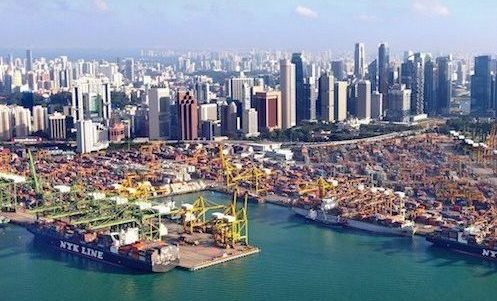Time for a dedicated Singapore maritime bank

Singapore-based shipping advisor Vijay Kamath has a fix for the Lion Republic’s ship finance shortcomings.
The development of Singapore as an international maritime centre (IMC) is centred on its vision to be the global maritime hub for connectivity, innovation and talent. Maritime Singapore is a major contributor to the country’s GDP. Over 5,000 shipping establishments reside in Singapore and employ more than 170,000 people. Over the years, Singapore has developed into the hub for many large maritime businesses and industry groups. Singapore is also one of the top three container ports in the world. The Singapore Registry is already one of the largest in the world. Singapore is a leader in the almost all maritime related infrastructure, except in the areas of maritime finance and maritime insurance. Some steps have been taken with regards to increasing Singapore’s presence in the maritime insurance sector and I see this developing further. I also understand that there are some areas of concern with regards to audit and oversight issues in the technical space, which I do not feel any way qualified to comment upon. However, it is the area of maritime finance that I feel that there is more that can be done here.
Let’s talk a little bit maritime finance. The banking industry has been adversely affected since the 2008 financial crisis with many banks taking large losses and write-downs. Worldwide, banks have been provided equity support by their respective governments which have led to curbs in lending and have diverted their focus to domestic lending to provide a fillip to local economies. Shipping lending has traditionally been dominated by European banks, many of which have partially or completely withdrawn from lending to the marine and offshore sectors and are more focussed on restructuring existing lending to these sectors, thus reducing fresh lending in this sector. Many of these banks are currently also under balance sheet pressures with the need to divest some part of their portfolio. With fresh regulations on banking and with existing balance sheet pressures, most traditional shipping banks are likely to remain reluctant to lend to shipping business in the near future.
Given this withdrawal, the funding gap has increased for shipping companies. This gap needs to be bridged in order for small to medium scale shipping companies to survive. Traditionally, these companies could borrow 60-70% of asset value from senior commercial debt market, largely from tradiational shipping lenders. Now, most of these shipping lenders have dialled back lending to shipping. Chinese leasing companies have been providing the majority of shipping finance recently, but these are only to projects of scale. Smaller owners have had to turn to more expensive models of financing their purchases, through private equity players, and some new entrants.
There continues to be severe capital pressure on traditional shipping lenders, through loan losses, toxic asset write-downs and government intervention. Asian Banks have been regionally active, but limited industry specific experience and a portfolio of some toxic assets deter them from lending further to the industry. Chinese leasing companies are certainly the most active in current climate.
There is continued strong demand for financing from established shipping and offshore service companies, while access to financing for highly qualified and well-established companies and projects within the marine and offshore sectors, is limited. Apart from that, various new regulatory requirements could result in reduced supply of credit and increased margins.
This provides a platform for any new entrants in the business. In the past 3-4 years we have seen many new lenders step into the void, e.g., the Chinese and Japanese leasing companies, Macquarie Bank, Maritime & Merchant Bank, several private equity players stepping into the lending market, etc. Even with the rise of such ‘alternate’ lending, we see some transactions being unfinanced, not for the quality or structure of the borrower or the transaction, but sometimes due to lack of appetite from the lenders.
While I am a proponent for less lending being a boon for less ordering and thus less capacity, this has not come to pass, as ordering has continued, largely due to the presence of development financial institutions or as in the case of China, the leasing companies.
There is therefore an opportunity to create a specialist maritime (transport & related infrastructure) bank headquartered in Singapore. Given current market scenarios, the risk/ return profile is generally attractive. Loan margins have increased with lower leverage at today’s (lower) asset prices. Risk adjusted returns are therefore substantially higher with the prevalent vessel prices.
There are several possible ways that this objective can be met, such as, creating a new bank through fresh funding and using that to create a new portfolio or acquiring existing portfolios and banking infrastructure, and then using that to further portfolio augmentation. The Singapore government’s financial packages for sustaining the marine and offshore industries announced in late 2016 and administered by IE Singapore and Spring Singapore could be a base for building the bank’s portoflio.
Once the bank has reached sustainable profitability and size, that would in itself provide further opportunities for growth at that time, including an IPO, which would enable initial investors to monetise parts or whole of their investment, depending on market circumstances. The requisite expertise in shipping and banking is, in my opinion, readily available in Singapore, with many senior shipping banking professionals residing here who, I’m sure, would be keen to taking up roles in such a venture. At this stage, what would be most important is the will and the capital for such a venture being available.
